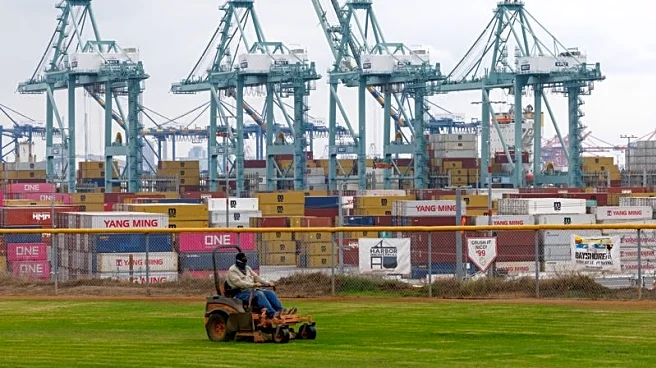What's Happening?
Phung Quoc Man, Chairman of the Handicraft and Wood Industry Association of Ho Chi Minh City (HAWA), has announced significant growth in Vietnam's wood industry, with exports increasing from less than
$200 million in 1999 to an estimated $20 billion in 2025. Vietnam is now the world's second-largest exporter of interior-decor wooden furniture, following China, and exports to 166 markets globally. Ho Chi Minh City, post-administrative merger, contributes nearly half of the national wood-product export value, surpassing Binh Duong, the former manufacturing center. The city’s integrated ecosystem, which includes manufacturing, processing, logistics, and seaports, positions it as a potential regional hub for furniture manufacturing and export.
Why It's Important?
The growth of Vietnam's wood industry is crucial for the country's economic development, providing a significant boost to its export capabilities. Ho Chi Minh City's potential as a regional hub could enhance Vietnam's global competitiveness in the furniture market. The shift from 'Made in Vietnam' to 'Made by Vietnam' signifies a strategic move towards embedding Vietnamese firms in global supply chains, which could lead to increased brand recognition and higher value-added products. This development could also attract foreign investment and create more jobs within the industry.
What's Next?
Municipal authorities are urged to implement policies to establish Ho Chi Minh City as a global furniture manufacturing and export hub. This includes fostering collaboration among authorities, associations, and businesses, with HAWA leading the strategy. Companies are encouraged to set up R&D units and incorporate Vietnamese cultural motifs into their designs to build distinctive brands. Additionally, there is a push for digital transformation, green transition, and supply chain transparency to overcome current hurdles. The government is also advised to develop a national wood industry database to support these initiatives.
Beyond the Headlines
The emphasis on green transition and digital transformation highlights the industry's commitment to sustainability and innovation. Initiatives like the 'low-emission wood factory' aim to reduce CO2 emissions and advance low-carbon certification, creating a green wood cluster with shared infrastructure. This approach not only addresses environmental concerns but also provides smaller enterprises with affordable options to go green, potentially setting a precedent for other industries.













